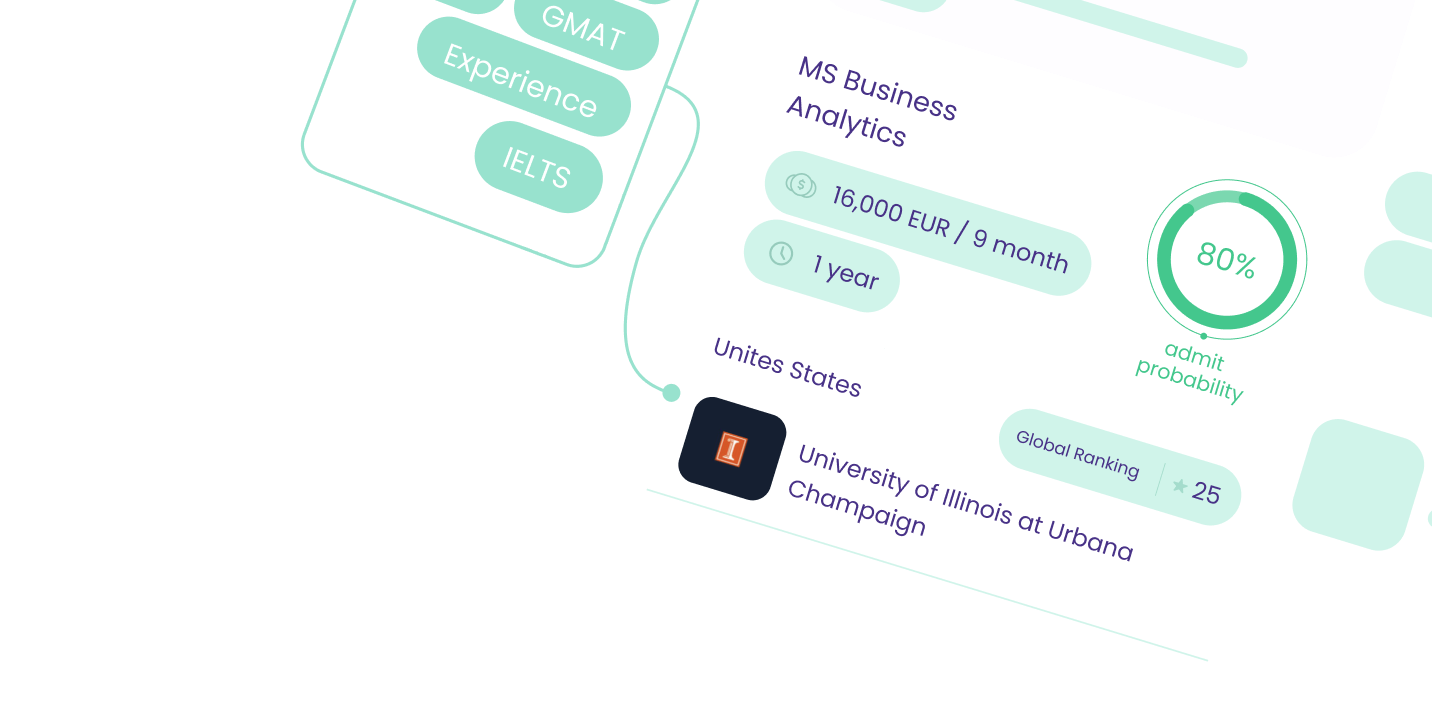GMAT exam syllabus
The GMAT is a three-and-a-half-hour exam with an 800-point maximum score. The GMAT Syllabus is segmented into four components i.e. Quantitative Reasoning, Verbal Ability, Integrated Reasoning, and Analytical Writing Assessment. In these four sections, the GMAT Exam Syllabus contains 50 subjects. The Verbal component covers reading comprehension, sentence rectification, and critical thinking, while the Quant section covers data sufficiency and problem-solving.
GMAT exam sections
Analytical Writing Assessment GMAT
The Analytical Writing portion may include themes for the applicant to write about or a piece from which questions will be asked. The applicant will be required to respond based on the text. The curriculum for this subject is extensive and diverse since the passage's topic might be anything of interest. The basic concept is to concentrate on the answer's structure rather than the reasons offered. Remember that this is a test of your writing style, not your views, so it's best to keep it impartial.
Integrated Reasoning GMAT
The GMAT Syllabus has recently been updated to include an Integrated Reasoning portion. This component assesses the applicants' ability to assess data provided in the form of a graph or table. There are 12 questions in this section. The table analysis component assesses applicants' way of sorting and analyzing data in a table, whereas the two-part analysis section assesses their ability to solve complicated issues. Multi-Source Reasoning assesses applicants' ability to analyze data from a variety of sources, including tables, graphs, and text excerpts, or a combination of the three. Graphics Interpretation is a test that assesses a candidate's ability to analyze data given in a graph.
There are four types of questions are used in this section:
- GMAT Multi-Source Reasoning: It includes questions related to Critical Reasoning and quant which may be presented in text or in the form of charts.
- GMAT Table Analysis: A table with three different questions with two answer choices for each question. Useful and non-useful data should be differentiated to answer the questions asked.
- GMAT Graphics Interpretation: The candidate is provided with a graph or chart to analyze information, with two questions. The graph or chart should be interpreted and statements should be completed by choosing the appropriate answer from the choices given.
- GMAT Two-Part Analysis: A short paragraph with information is provided, out of which multiple-choice questions are presented in different columns and rows. Each column stands for a component and is a part of the solution. One answer from each column should be selected.
Quantitative Reasoning GMAT
The quantitative component of the GMAT assesses the test takers' ability to analyze and reason. Unlike the other sections of the GMAT test, the GMAT Quant is a score component for all students. There are a total of 31 quant questions on the GMAT. This section has a total time limit of 62 minutes, giving the applicant 2 minutes to answer each problem. The Data Sufficiency and Problem Solving parts each include 15-16 questions on average.The problems will be objective in nature, with multiple-choice responses. Problem-solving (testing the candidates' ability to utilize logic and analytical reasoning to solve quantitative issues) and data sufficiency (determining which data is critical and evaluating whether there is sufficient data to address the issue) are examples of questions from the math curriculum that may be anticipated in this area.
Verbal Reasoning GMAT
There will be 36 multiple-choice problems in the Verbal Skills segment. Critical Reasoning (measures the candidates' ability to make assertions, assess arguments, and establish or evaluate a plan of action), Reading Comprehension (measures the candidates' ability to draw conclusions), and Sentence Correction (measures grammatical facets of the candidates' language proficiency) are the three sections. This component assesses the applicants' ability to read and comprehend written information, as well as the logical link between the passage's arguments and ideas.
GMAT exam pattern
Subjective and objective inquiries are included in the GMAT test format. It is a computer adaptive exam with a total of 80 problems that must be solved in three hours and seven minutes. Because of the worldwide character of the GMAT Exam, there is a lot of competitiveness among candidates. GMAC, the test administrator, determines the GMAT exam design. Students are given questions to complete in each segment, with a time restriction, on a broad variety of subjects.
| Section | Time Limit / Number of Questions | Question Types | Score Range |
| Analytical Writing Assessment | 30 minutes 1 question | Analysis of an Argument (50%), Issue Essay (50%) | 0-6 (in 0.5-point increments) |
| Integrated Reasoning | 30 minutes 12 questions | Graphics Interpretation, Table Analysis, Multi-source Reasoning, Two-part Analysis | 1-8 (in 1-point increments) |
| Quantitative Reasoning | 62 minutes 31 questions | Data Sufficiency (50%), Problem-Solving (50%) | 6-51 (in 1-point increments) |
| Verbal Reasoning | 65 minutes 36 questions | Reading Comprehension (60%) Critical Reasoning (20%), Sentence Correction (20%) | 6-51 (in 1-point increments) |







Piyush Bhartiya
Piyush values education and has studied from the top institutes of IIT Roorkee, IIM Bangalore, KTH Sweden and Tsinghua University in China. Post completing his MBA, he has worked with the world's # 1 consulting firm, The Boston Consulting Group and focused on building sales and marketing vertical for top MNCs and Indian business houses.